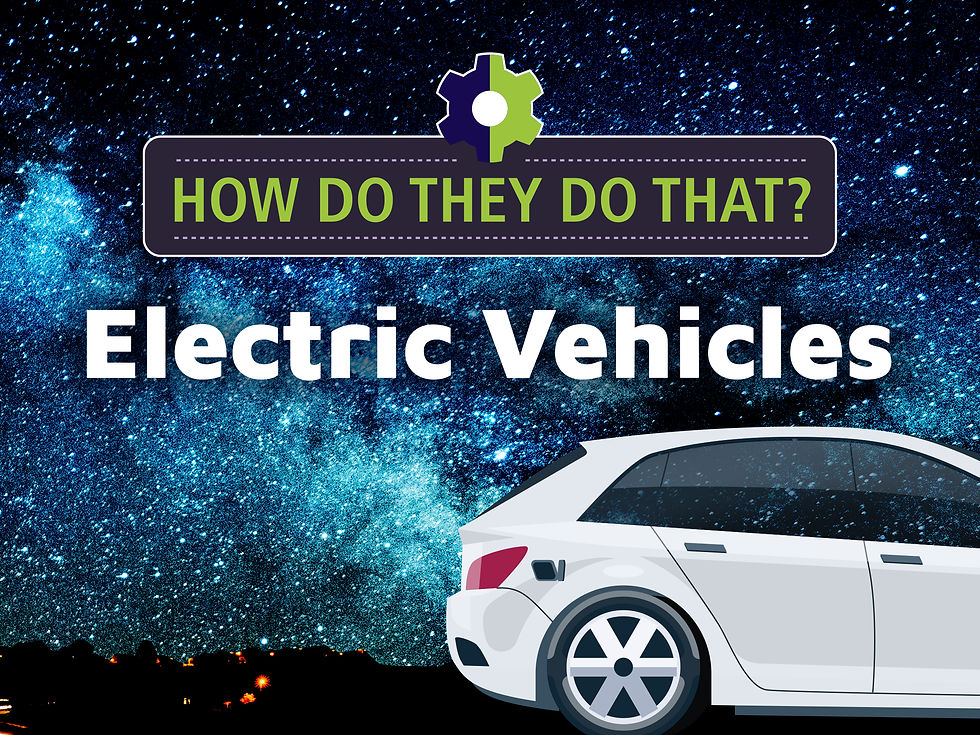How Do They Do That: Electric Vehicles
- Smart Choices
- May 15, 2023
- 1 min read
Updated: Jun 27, 2023
How do electric vehicles provide clean, high-performance driving? Peek under the hood and find out!

At first glance, electric vehicles may appear like conventional vehicles, but if you look closer, you’ll see a lot of differences. There is no fuel tank, oil pump or spark plugs. Also, EVs are powered by an electric motor instead of an internal combustion engine. Finally, EVs contain a lot of parts you won’t see on a conventional vehicle – such as a battery pack, charge port and inverter.
Here’s how electric vehicles work:
The charge port connects the vehicle to an external power source to charge the battery pack.
The rectifier converts alternating-current (AC) voltage from the grid to direct-current (DC) voltage for charging the battery pack.
The battery pack stores enough energy to travel a minimum of 100 miles per charge.
The inverter takes DC voltage from the battery pack and converts it back to AC power for use in the motor.
The motor uses electricity from the battery pack to create mechanical power to drive the vehicle’s wheels.
Regenerative braking generates electricity while the vehicle is coming to a stop. This electricity is stored in the battery pack.
EVs offer many advantages compared to conventional vehicles – lower fuel cost, less maintenance and quieter operation. Plus, EVs produce no tailpipe emissions. It’s no wonder EVs continue to gain traction!
Ask us about rebates available for the installation of electric vehicle chargers for your home or business!





Comments